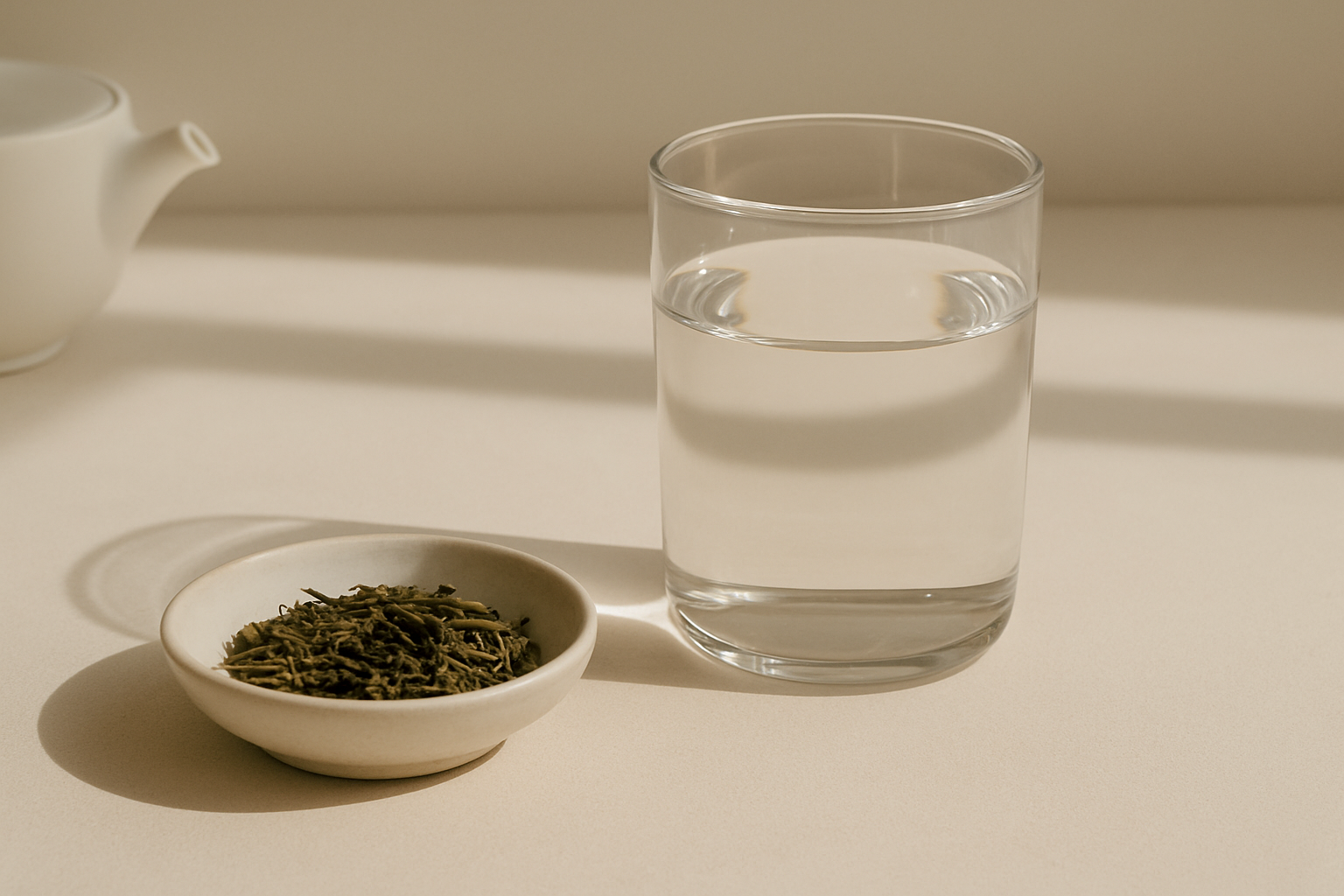How Important Is Water Quality When It Comes to Brewing Tea?

When people set out to improve their tea, they usually focus on the leaves: higher grade, fresher harvest, better storage. All of that matters, of course. But there’s one element that makes up 95–99% of what’s in your cup, and it often gets overlooked: water.
The truth is, the same tea can taste bright and nuanced with one kind of water, and dull or even unpleasant with another. If you have ever wondered why your carefully chosen leaves don’t taste as good at home as they did at a tearoom, the answer might be what’s flowing from your kettle.
Why Water Quality Matters
Tea is essentially a conversation between leaf and water. The aromatic compounds, amino acids, and tannins in the leaf don’t exist in isolation, they dissolve and express themselves through water. Think of water as the canvas: if it’s unbalanced or impure, the picture will be distorted.
Poor-quality water can mask floral notes, flatten aroma, or bring out excessive bitterness. On the other hand, water with the right balance of minerals and freshness draws out tea’s complexity and depth. It is not an exaggeration to say water can make or break your cup.
Common Water Types and Their Effects
Tap water is often the most convenient option, but its quality varies dramatically from place to place. Municipal systems may add chlorine, fluoride, or other treatments that leave behind noticeable tastes. High mineral content can also weigh down the tea, making it taste heavy or metallic.
On the other end of the spectrum, distilled or reverse osmosis (RO) water removes almost everything, including beneficial minerals. The result is an extremely “clean” water that unfortunately tastes flat, producing tea that feels lifeless and hollow.
Spring water tends to strike a better balance. With a natural mix of minerals, it often enhances tea by giving structure and body without overwhelming delicate notes. Many tea drinkers find spring water a reliable choice, especially when exploring higher-end loose leaves.
Filtered water is perhaps the most practical solution for everyday brewing. A good carbon filter can remove chlorine and impurities while leaving essential minerals intact, creating water that is pleasant to drink and well-suited for most teas.
Key Factors in Water Quality
- Mineral Content (Hardness vs. Softness): Calcium and magnesium affect how tea extracts. Softer water highlights delicate teas like green or white, while moderately hard water supports the strength of oolong and black teas.
- pH Level: Ideally close to neutral. Too alkaline and tea tastes dull, too acidic and it turns sharp.
- Freshness and Oxygenation: Water that is freshly drawn and not reboiled contains more dissolved oxygen, which enhances brightness and aroma.
- Temperature: While not strictly a water “quality” issue, good water transfers heat predictably. That consistency is essential for brewing teas at the right temperature.
Brewing Better with the Water You Have
Not everyone lives near pristine mountain springs, and that’s okay. With small adjustments, you can still brew excellent tea:
- Taste-test your tap water. If you wouldn’t drink it plain, don’t brew tea with it.
- Use a filter. A simple carbon filter pitcher or under-sink system can make a big difference.
- Avoid reboiling. Boil only what you need each time to keep oxygen levels high.
- Experiment with bottled spring water. Try brewing the same tea with your tap and a good spring water, the difference is often startling.
The Portman Philosophy
At Portman, we see water as part of the tea’s ecosystem. Just as we source whole leaves with care and package them sustainably, we believe water deserves equal attention. Good water does not compete with the tea, it lets the leaves speak clearly, revealing their true character.
One of the best exercises for tea drinkers is simple: brew the same leaves with different waters. Think of it as a form of tea reconnaissance. You will discover not just new flavors, but a deeper understanding of how tea interacts with its most important partner.
The Invisible Ingredient That Makes All the Difference
In the end, water is not just a background player, it is the medium that brings tea to life. Paying attention to it can transform your daily brew from ordinary to extraordinary.
Tea is a dialogue between leaf and water. When both are respected, the result is harmony in the cup.
